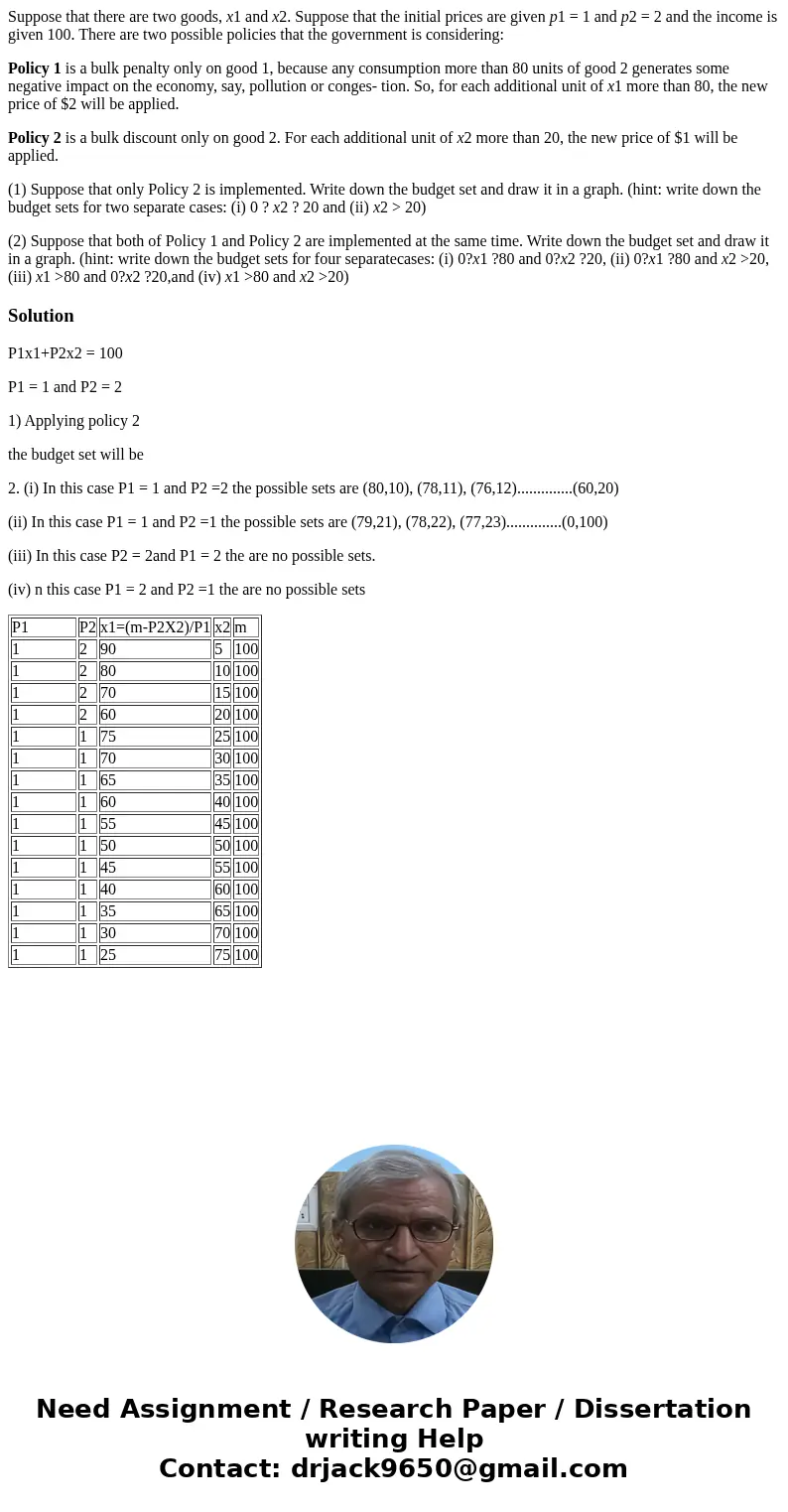Suppose that there are two goods x1 and x2 Suppose that the
Suppose that there are two goods, x1 and x2. Suppose that the initial prices are given p1 = 1 and p2 = 2 and the income is given 100. There are two possible policies that the government is considering:
Policy 1 is a bulk penalty only on good 1, because any consumption more than 80 units of good 2 generates some negative impact on the economy, say, pollution or conges- tion. So, for each additional unit of x1 more than 80, the new price of $2 will be applied.
Policy 2 is a bulk discount only on good 2. For each additional unit of x2 more than 20, the new price of $1 will be applied.
(1) Suppose that only Policy 2 is implemented. Write down the budget set and draw it in a graph. (hint: write down the budget sets for two separate cases: (i) 0 ? x2 ? 20 and (ii) x2 > 20)
(2) Suppose that both of Policy 1 and Policy 2 are implemented at the same time. Write down the budget set and draw it in a graph. (hint: write down the budget sets for four separatecases: (i) 0?x1 ?80 and 0?x2 ?20, (ii) 0?x1 ?80 and x2 >20, (iii) x1 >80 and 0?x2 ?20,and (iv) x1 >80 and x2 >20)
Solution
P1x1+P2x2 = 100
P1 = 1 and P2 = 2
1) Applying policy 2
the budget set will be
2. (i) In this case P1 = 1 and P2 =2 the possible sets are (80,10), (78,11), (76,12)..............(60,20)
(ii) In this case P1 = 1 and P2 =1 the possible sets are (79,21), (78,22), (77,23)..............(0,100)
(iii) In this case P2 = 2and P1 = 2 the are no possible sets.
(iv) n this case P1 = 2 and P2 =1 the are no possible sets
| P1 | P2 | x1=(m-P2X2)/P1 | x2 | m |
| 1 | 2 | 90 | 5 | 100 |
| 1 | 2 | 80 | 10 | 100 |
| 1 | 2 | 70 | 15 | 100 |
| 1 | 2 | 60 | 20 | 100 |
| 1 | 1 | 75 | 25 | 100 |
| 1 | 1 | 70 | 30 | 100 |
| 1 | 1 | 65 | 35 | 100 |
| 1 | 1 | 60 | 40 | 100 |
| 1 | 1 | 55 | 45 | 100 |
| 1 | 1 | 50 | 50 | 100 |
| 1 | 1 | 45 | 55 | 100 |
| 1 | 1 | 40 | 60 | 100 |
| 1 | 1 | 35 | 65 | 100 |
| 1 | 1 | 30 | 70 | 100 |
| 1 | 1 | 25 | 75 | 100 |

 Homework Sourse
Homework Sourse